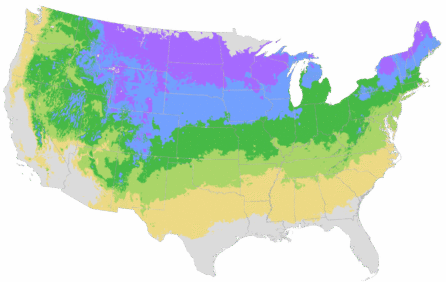You're growing in this Zip Code:
Change LocationDiscover Plants for Your Area
Sargent Crabapple
Malus sargentii
Retailers Near You
No Retailers found within 50 miles of your zipcode
Be Inspired: How to Use this Plant
| Bloom Time | Spring |
|---|---|
| Deciduous/Evergreen | Deciduous |
| Special Features | Fall Color, Ornamental Berries, Compact Form, Benefits Birds |
| Growth Rate | Moderate |
| Flower Attributes | Fragrant, Showy Flowers |
| Design Ideas | A perfectly sized accent tree for front yard foundation planting. Use along fence lines and in mixed borders for seasonal changes. A valuable habitat plant that provides late season fruit for birds. Adapts very well to rural and suburban homesites requiring little care. May be used in institutional landscapes seeking a more ecologically sensitive approach to planting. |
| Flower Color | White |
| Foliage Color | Green |
| Companion Plants | This little crabapple belongs with later flowering shrubs such as Preziosa Hydrangea, (Hydrangea serrata 'Preziosa'), Petite Plum Crepe Myrtle, (Lagerstroemia indica 'Monimp'), Blue Satin Rose of Sharon, (Hibiscus syriacus ''Marina') and Balboa Sunset Trumpet Vine, (Campsis radicans 'Monbal'). |
| Care Instructions | Follow a regular watering schedule during the first growing season to establish a deep, extensive root system. Watering can be reduced after establishment. Feed with a general purpose fertilizer before new growth begins in spring. |
| Lore | While crabapples are usually to sour to eat fresh, they have been used to make jams and jellies. |
| Bloom Time | Spring |
|---|---|
| Deciduous/Evergreen | Deciduous |
| Special Features | Fall Color, Ornamental Berries, Compact Form, Benefits Birds |
| Growth Rate | Moderate |
| Flower Attributes | Fragrant, Showy Flowers |
| Design Ideas | A perfectly sized accent tree for front yard foundation planting. Use along fence lines and in mixed borders for seasonal changes. A valuable habitat plant that provides late season fruit for birds. Adapts very well to rural and suburban homesites requiring little care. May be used in institutional landscapes seeking a more ecologically sensitive approach to planting. |
|---|---|
| Flower Color | White |
| Foliage Color | Green |
| Companion Plants | This little crabapple belongs with later flowering shrubs such as Preziosa Hydrangea, (Hydrangea serrata 'Preziosa'), Petite Plum Crepe Myrtle, (Lagerstroemia indica 'Monimp'), Blue Satin Rose of Sharon, (Hibiscus syriacus ''Marina') and Balboa Sunset Trumpet Vine, (Campsis radicans 'Monbal'). |
| Care Instructions | Follow a regular watering schedule during the first growing season to establish a deep, extensive root system. Watering can be reduced after establishment. Feed with a general purpose fertilizer before new growth begins in spring. |
|---|
| Lore | While crabapples are usually to sour to eat fresh, they have been used to make jams and jellies. |
|---|
Retailers Near You
No Retailers found within 50 miles of your zipcode
Retailers Near You
No Retailers found within 50 miles of your zipcode
Buy Online
This plant is not available to purchase online.
We no longer grow this plant. For replacement suggestions, check out the plants “You May Also Like” below.
About Us
We have been pioneers and craftsmen in the art of growing plants for nearly
100 years. Since our founding in Southern California by Harry E. Rosedale, Sr.
in 1926, we have been absolutely dedicated and obsessed with quality.
We have been pioneers and craftsmen in the art of growing plants for nearly 100 years. Since our founding in Southern California by Harry E. Rosedale, Sr. in 1926, we have been absolutely dedicated and obsessed with quality.






